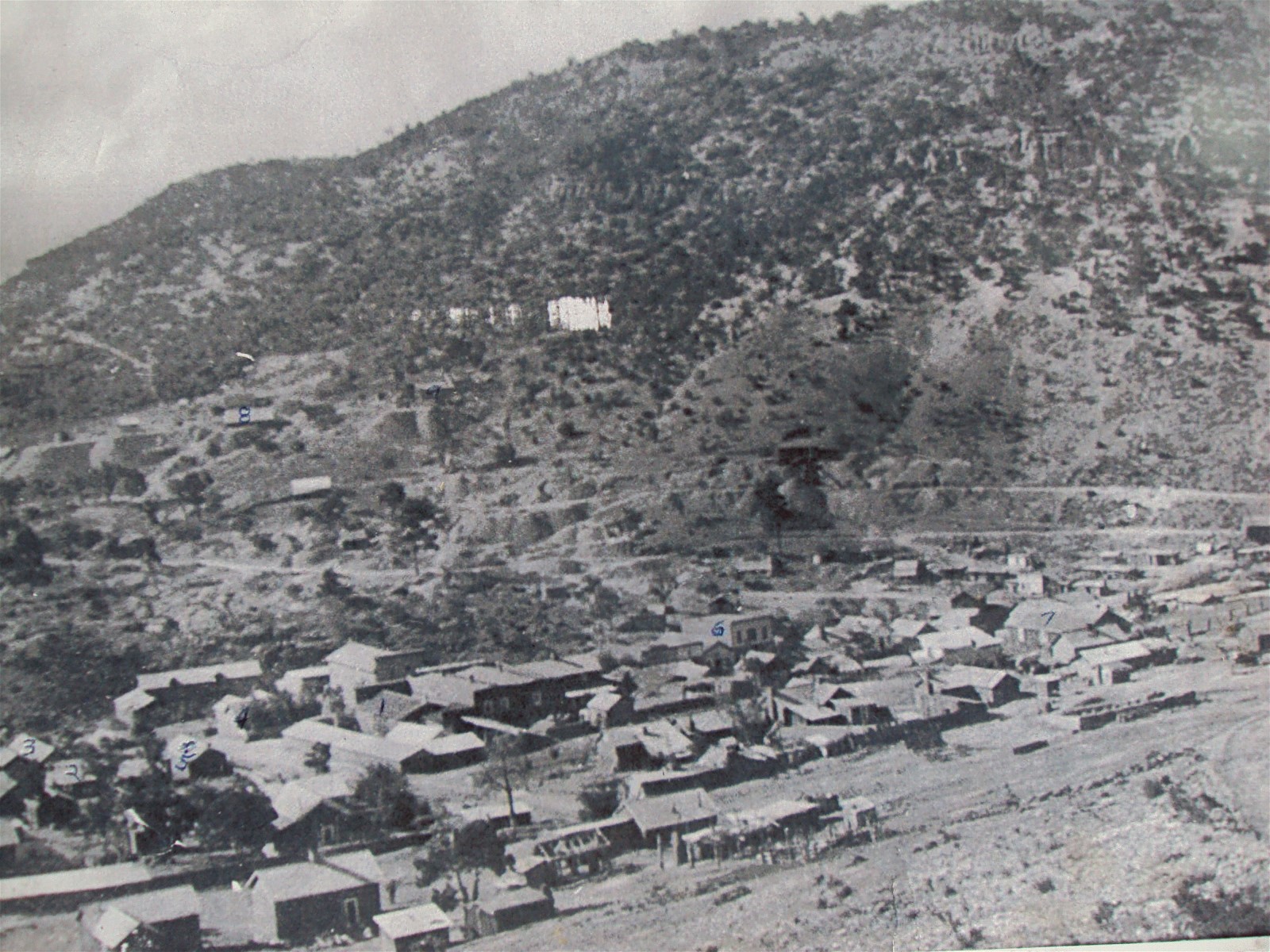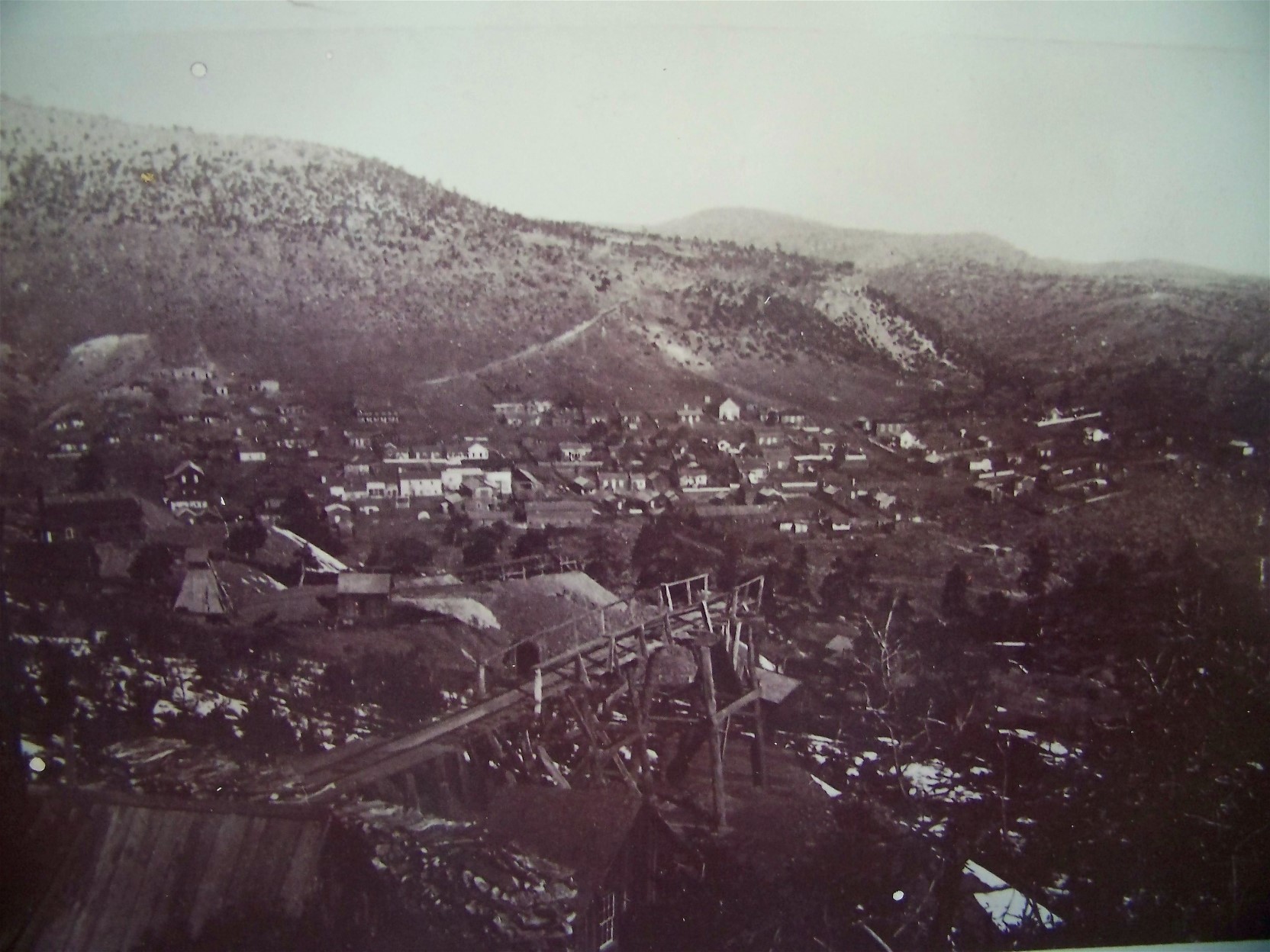History of Georgetown, New Mexico
A noted traveler that passed through Georgetown and witnessed the decline of the town around the mid 1890s remarked how sad it was to see the once bustling silver mining town quiet with such little activity. The remaining town folks were holding out for a change in the government’s policy on continued support of silver prices, but most knew in their hearts that it had little hope of happening. At the end of the article, the writer noted that maybe someone would come along and realize the beauty of this place may far outweigh the elusive silver that hid beneath Parapet Mountain. He went on to say that maybe it could be turned into a resort for people to enjoy and maybe give the little town one more reason to prosper.


Although his prophecy may have turned out to be correct, it took well over 100 years before a couple named Jon and Susie Eickhoff, who retired from the fast-paced world of an engineering service company in Michigan, found this forgotten piece of history and started once again some exploration around Georgetown. This time the exploration was not for the elusive silver, but for the almost non existent historical information about the community. The town’s demise in the late 1800s precedes the territory becoming a state and therefore state records, archives, and historical information shows only short mentions of Georgetown’s existence. Georgetown received its name around 1877 when John Magruder named the town in memory of his older brother George Magruder. George died in a milling accident at the Magruder Mill on the Mimbres River.
The Magruders’ mining claim, the Uncle Samuel, became the town site for the fledgling town. It was laid out in a “V” from the Willow Springs water supply. The northern part of the “V” was the “better” side of town with churches, schools and better built homes. The southern side of the “V” consisted of miners’ shanties, saloons, and bawdy houses. The center of town was the business district with several mercantile shops, a butcher shop, harness shop, restaurants, a hotel, etc. At its highpoint, Georgetown had 1200 residents. The collection of mines across the valley above Willow Creek, on the edge of Parapet Mountain, turned out to be top producing silver mines in the mining district. The McGregor, (site of Georgetown Cabins), was the second highest producing silver mine behind the Naiad Queen that was owned by Meredith and Ailman. Ailman later moved to Silver City to open a banking operation. Ailman’s large brick home, in Silver City, was later to become the Silver City Museum.
During its hey day the town had its share of run-ins with the Apache renegades who kept the town at some state of alert most of the time. The frustration with the government controlling the Indian population is one of the reasons that additional information can be found about the town folks and the town in it’s hey day. The government had an almost full time presence in the community with men from the local forts spending much time in each of the mining camps to keep the Apaches guessing.
Our Cabins Overlook the Original Old Georgetown Site!
Immerse with Nature & History
Today, the six new cabins at Georgetown carry the names of some of those hardy town folks.
The first cabin named the Jolly-McGregor is named after Malcolm McGregor a prospector, miner and eventual large real estate owner who along with his wife were prominent in the social workings of Grant County. Malcolm and his brother Alex both were elected to county offices. The second cabin, the Lindauer, is named for a bigger than life merchant who kept a notebook in his pocket to write down the I.O.U.s from the locals who didn’t have the resources to pay the bill at his mercantile. The third cabin is named the Lottie Deno. Lottie was an infamous gambler, here in Georgetown. She was the inspiration for the character Miss Kitty on the TV series Gunsmoke. Cabin four is named Judge James A. Lucas. Lucas had a reputation, not unlike Judge Roy Bean, for divvying out his own kind of frontier justice. Cabin five is named for Stanton S. Brannin a mule skinner, trapper turned prospector and miner who sired 13 children. Although a slight man, barely measuring five foot tall and wearing a size six boy’s shoe, he had a fiery spirit and ended up in front of Judge Lucas on many occasions for trying to settle disputes with a gun or knife. Cabin six, the Mitchell, is named for John Mitchell, a "Cornwall Jack" who came from Cornwall, England. At age 32, and while living in Georgetown, he married a 16 year old Mexican girl named Marcella. He offered her family a set of matched mules in exchange for his young bride.
The Eickhoff’s have been aided by many locals who have shared family stories, photographs, etc. and they are compiling information not only about the six people mentioned above, but about hundreds who were prominent at Georgetown in its hey day. Information obtained is unable to even pinpoint the exact amount of silver extracted at Georgetown because the records are intermingled with the Silver City production so most numbers found are only estimates. The mining museum at Socorro is a great source of information along with the State Archives, Silver City Museum, Archives of New Mexico Magazine and Western New Mexico University Museum. It’s only when you bring all of these sources of information together is when you see a snapshot or glimpse of the once very proud town.



